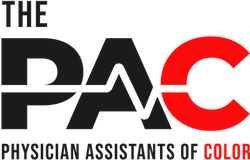
17 Jan PA Programs: Finding a good fit
As someone who was applying to PA programs just over 3 years ago, I remember having well-meaning people repeatedly tell me that I should make sure the programs I was selecting were a good fit for me. A lot of times I was not sure what a good fit meant or would look like, and many days I thought to myself, “just get into any PA school and make it work.” Once I started researching PA programs, understanding their academic structures, missions and beliefs, I started understanding more, the concept of a good fit. I realized that choosing a PA program could be a bidirectional process that could yield a mutually beneficial process for applicants and programs.
As of December 2020, there are 268 ARC-accredited PA programs in the United States, a number that is expected to grow even more in the next few years. With this bevy of options available to applicants it can be confusing to decide what is the right fit for you.
Here are some things to consider when deciding whether a PA program is the right fit.
Prerequisites Required: Prerequisites are one of the biggest factors in students’ decision and ability to apply to specific PA programs. As such, it would not make sense for a student to apply to a PA program for which they have not met the requirements. If you are not sure if a certain course meets a program’s requirements, it is best to contact the program directly, ahead of the application due date, to check.
GPA required: Making sure that you meet the minimum required GPA is always a good idea prior to applying or it could be a waste of your application fee. When applying to programs that use holistic admissions practices and or consider upward trajectory of grades, including post baccalaureate work, it is prudent to contact the program directly, ask questions and verify grade requirements.
Health/Patient Care Experience: Here again, it is important to make sure that your healthcare and patient care hours align with program requirements. Health care experience (HCE) differs from patient care experience (PCE), a distinction we will delve into further in a subsequent article. However, the main take away should be that PCE experience defines your role has having patients directly under your care, whereas with HCE, patients are not directly under your care and HCE can include administrative work in a healthcare setting.
Location: Factors to consider when assessing a program’s location should of course include distance from one’s home, which could be a few miles, a different state or across the country. Another important aspect with location is looking at the community where the school is located, i.e., urban, suburban, or rural setting. This could influence availability of housing, types of training facilities available, variety of patients seen during clinicals, transportation, and weather considerations.
Cost: Cost of attendance is a huge factor in deciding which PA program to attend. Cost differences can be vast between private and public institutions and can be even more exaggerated when considering the disparity between in-state and out-of-state tuition. According to Educationdata.org, “student loan debt in the United States totals $1.68 trillion and grows over 6 times faster than the national economy.” Student debt is a reality for millions of students, a burden that is even heavier on students of color.
Class/Cohort size: Class size should be a consideration in whether a PA program is a good fit. Some programs have small cohorts, with numbers in the teens and some have large cohorts. It’s important to consider one’s learning style, personality, student-to-faculty ratio, and availability of resources in deciding your preferred programs.
Facilities/Resources: These can include simulation labs, cadaver labs, human anatomy demonstrators, skills labs and much more. Being able to visualize anatomical structures on cadavers and practice certain exams on real people can go a long way in solidifying learning.
PANCE Pass Rate: After graduating from PA school, the final hurdle to becoming a PA-C is passing the PANCE. A program with robust PANCE pass rates is indicative of the program’s ability to ensure that students are ready for the board exams and can pass.
Culture: Find out the attitudes, structures, beliefs, rules, and perceptions that guide how the program functions. Many times, culture can play as big a role in students’ success as academics. PA education is a huge undertaking, so making sure that the program you choose not only challenges you, but also supports, guides, and provides resources to help you succeed is essential. The culture of the program is reflected in its environment, curriculum, admissions practices, faculty, cohorts and even alumni, so do your homework and ask questions.
This is not an exhaustive list of the things to consider when deciding if a PA program is a good fit. However, I hope that it gives you some things to consider as you decide where to apply. Feel free to head over to The PAC’s discussion boards and share the things you’re taking into account as you decide which PA programs are the best fit for you.


No Comments